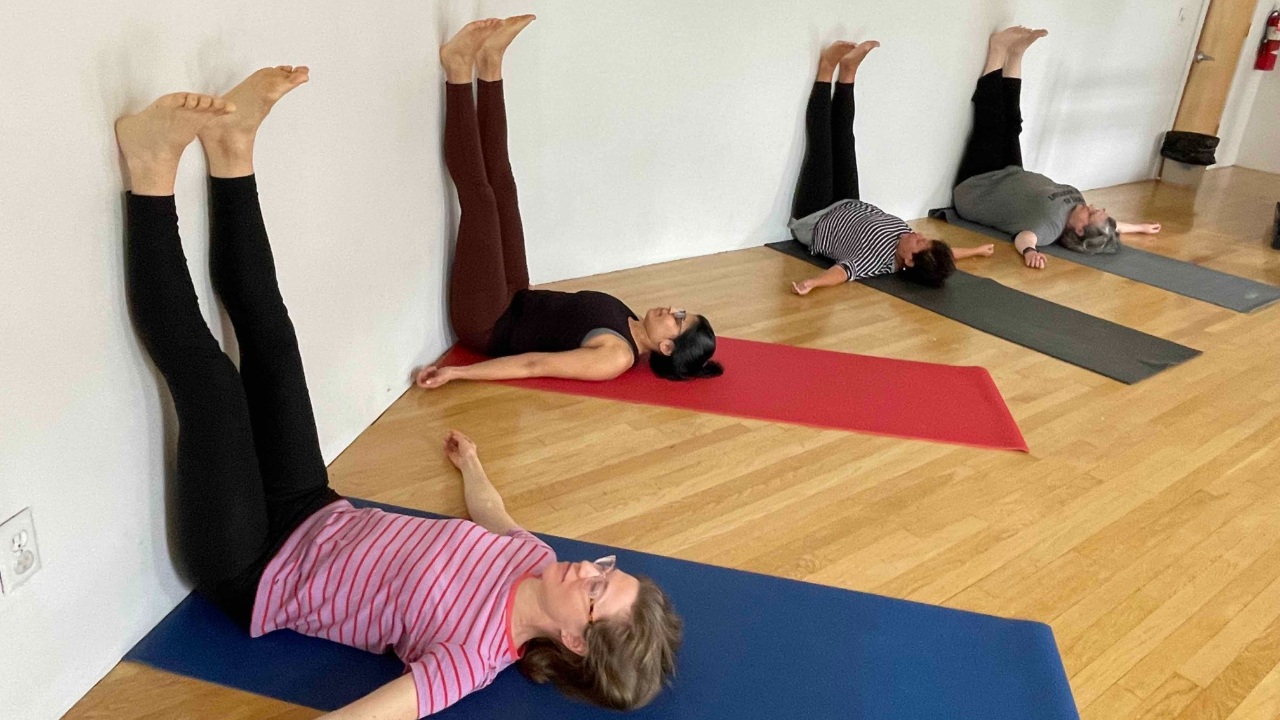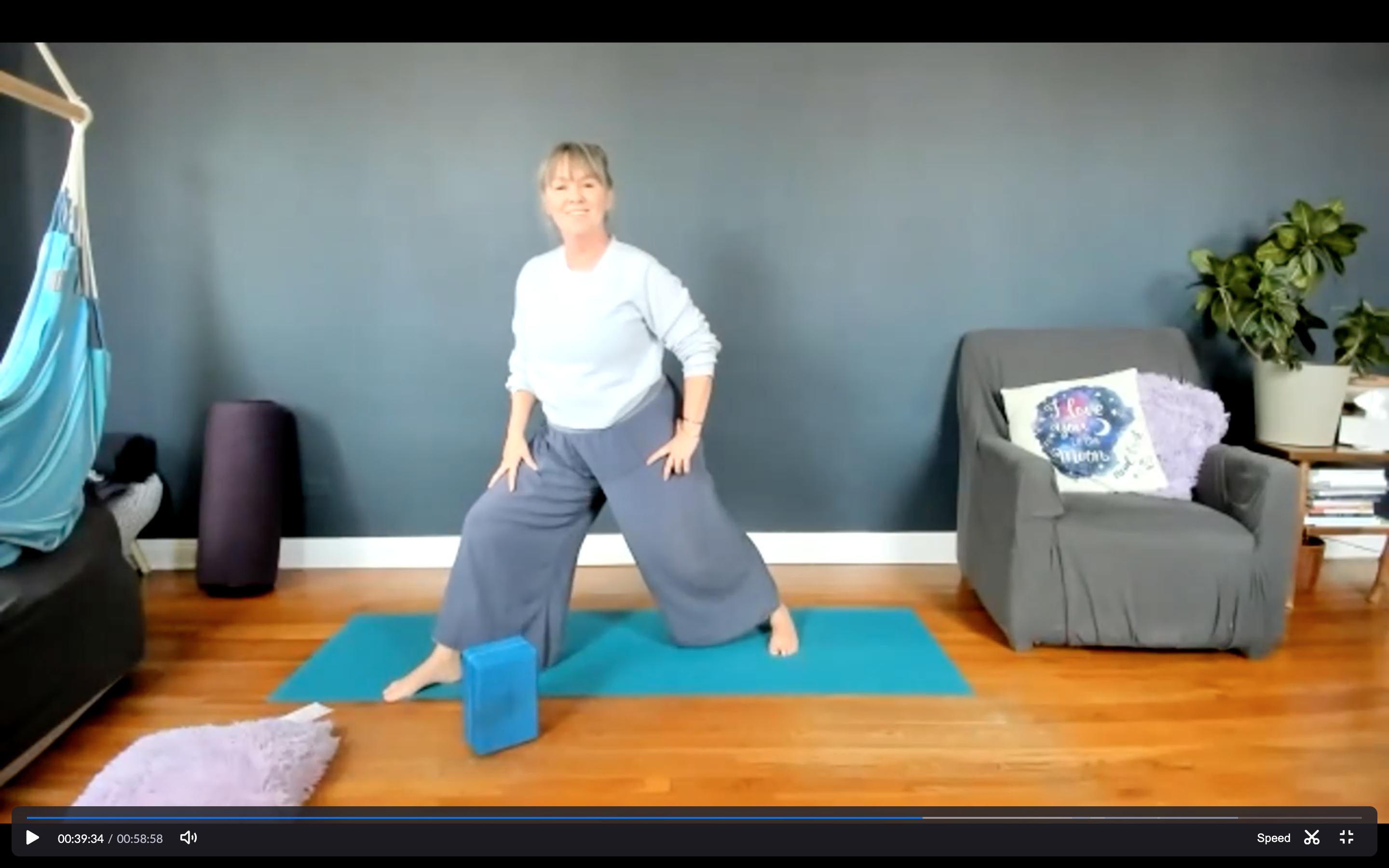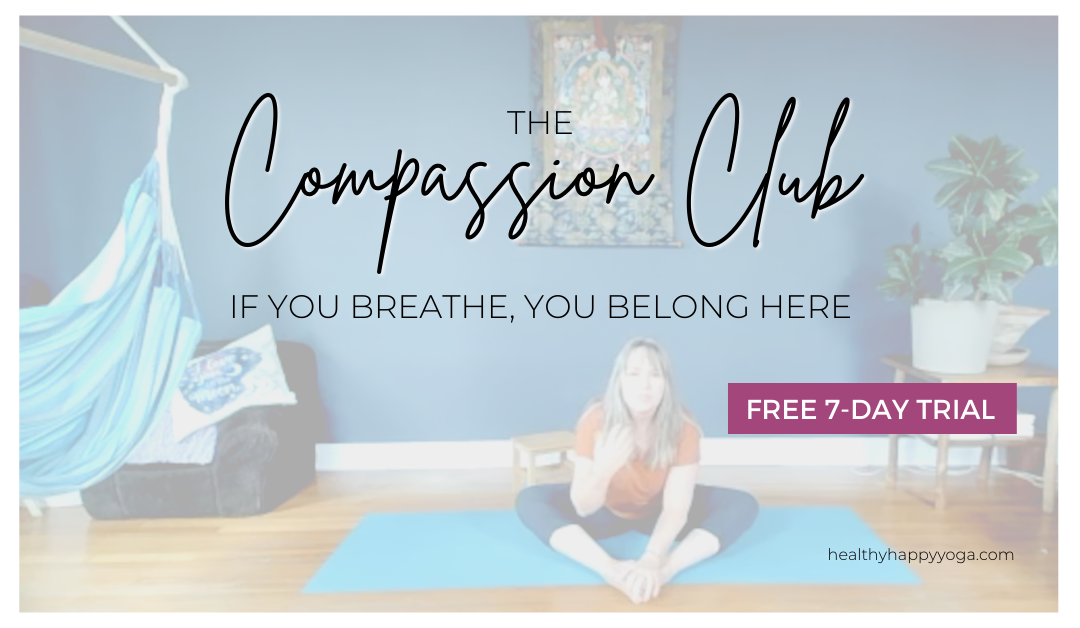
Here's something other yoga teachers believe that I don’t agree with: There is specific correct alignment for yoga postures and the teacher knows the best alignment for you.
I was talking to a new parent friend. When he learned that I’m a yoga teacher, he was telling me that he likes Iyengar yoga. His reason was he has a lot of injuries and it was helpful to learn the correct way to do the pose so he could stay safe. I found that idea very familiar, and also so interesting.
I reflected that the only times I have been injured in a yoga class were in Iyengar yoga.
I know that teachers in this tradition receive impeccable instruction in correct alignment. But a lot of training is not the same thing as a lot of experience. Seeing how different each body is, even from one week to the next, can be humbling and eye-opening.
I wonder if all of that training is what gives (many, not all) the Iyengar teachers I've encountered a certainty that overreaches their wisdom. Being in proximity to a teacher with that level of confidence can be both jarring and reassuring. The impact that sort of certainty has had on me (even as a fellow yoga teacher attending a class) has been interesting. I have diminished my own self-trust, overridden my inner signals, surrendered my body agency, and placed my locus of control in the teacher.
Cue injury.

Teachers who are trained with rigid rules about proper alignment will be looking for those who look different in class, to 'correct' their postures. Finding someone who looks different from the other, 'good' students, the teacher will go over and provide an adjustment. Who doesn't love some hands-on attention in yoga?! Actually, lots of people. Including me. I used to hope my teacher would bless me with an adjustment. Any kind of attention was welcome, because I looked up to my teachers.
Some yoga teachers really get off on being a big fish in a small pond, and I studied with some of the biggest fish in the business. I'll tell you a secret about those "famous" yoga teachers: charisma doesn't make you a better teacher, just a more popular one. Popularity is great (assuming they aren't abusing anybody), because the more students they have, the more people get to practice yoga, the more people yoga will help. That's wonderful, but it isn't the teacher working miracles.
The more the teacher is willing to get out of the way and let the yoga happen, the better you will feel in your practice. Everyone has blind spots, even the most famous yoga teachers. The main blind spot: No one knows your body as well as you do, because they are not living in it. Some teachers are willing to admit that, and some are not.
These sorts of blind spots aren't unique to Iyengar yoga. I was originally trained in an equally hubris-riddled tradition, headed up by a strict patriarch. Since that time, I've had the honor of supporting thousands of students of all ages, many in birthing bodies, many in injured bodies, and many in the prime of life who struggled with disabling anxiety. From those students, I've learned what my training missed:
Humility. Wonder. Respect for the practice of yoga beyond shapes, anatomy, or external cues.
I've seen how transformative it can be to learn to trust your body's cues. Somatic, therapeutic practices are about listening inside more and outside less. My practice has devolved from intense, elaborate, and impressive, to rolling around on the floor. And I'm loving it. That connection to the floor is where bliss finally found me. It couldn't be heard when I was barking alignment orders at myself. It couldn't keep up when I was flinging myself through creative, sweaty, flowing sequences.
When I paused and trusted my body and breath, I sighed. And bliss arrived.
A confident, charismatic teacher would serve their students best by getting out of their way.
In my understanding, yoga is trust, absorption, or union with universal truth. At the very least, yoga is a body that I feel at ease inside. That doesn't correspond with what I felt in those alignment-based classes.
Here's what I believe:
You are the only one inside your body. If you listen to your body, you will know the best alignment for you today. In my classes you will learn to listen to your body and honor your body’s needs. We use the poses to get into our bodies, not the other way around.
Back at the playground with my new friend, I shared my belief that there are infinite ways to do a pose because there are infinite variations in bodies and minds. Each of us is different from moment to moment.
Knowing more facts probably won’t keep you safe, and it certainly won’t make you happier.
Yoga styles such as Iyengar feed our cultural need for certainty and knowledge. We can look around and evaluate who is doing it right, and who’s not, and place ourselves on a hierarchy based on what shape our body can make. That hierarchical lens is inherently ableist. And it misses the opportunity for deeper wisdom.
One of the most incredible yoga teachers I’ve learned from is Matthew Sanford, who is paraplegic. (Notably, he’s an Iyengar teacher and credits the precision and use of props with making yoga accessible to him. I do feel the irony in quoting him when I'm critiquing aspects of how Iyengar yoga is taught.)
Matthew Sanford on worthiness:
“Yoga is infinite. You dishonor it by shrinking. Take up space. You don’t have to be right all the time, but you shouldn’t motivate yourself by feeling you’re continually not worthy... The space here is actually full. It’s not actually empty.”
-Mathew Sanford
Take up space. You are worthy exactly as you are. You can’t do yoga “wrong.”
Rigidity, or overriding of our body’s natural inclination, has no place in yoga. Yoga is your relationship between your body, your, breath, your mind, and your highest truth. Since it is unique to you, you can’t get it wrong.
Even if we’re only talking about postures, the rules are subjective. Whether you are doing a posture “right” or “wrong” will depend on your sensation in the moment, your reason for doing the pose, your ability to breathe within it, your level of frustration tolerance that day, and so many other factors.
I don’t believe there is one right way to do a pose or one right shape. It is going to depend on your body, and your body changes moment to moment, day to day.
So, what can you rely on if alignment rules won’t keep you safe?
Awareness! Wisdom can open us up, curiosity can expand our potential, and mindfulness can keep us grounded.
Wisdom is earned by observing your own body, mind, and breath, from moment to moment. Trust yourself enough to simply be in the pose and feel, without listening to the constant chatter telling you that you are doing it wrong. (No, you're not the only one hearing that inner critic 24-7.)
Why Rigid Alignment Cues Won't Keep You Safe or Lead You to Yoga
Yoga students want safety, certainty, and clarity in how they learn the postures. You have been told there’s a right/wrong way, and you believe it because there are rules for most activities we do. You believe if you do a yoga posture wrong you will get hurt. You don’t want to get injured, and you want to be a good student.
Especially the people pleasers among us, we want the teacher to approve. We don't want to be the one who draws their critical eye. (Although we do crave their attention - let it be praise, please!)
The best way to find ease and joy and comfort in our bodies as we practice (and to also avoid injury) is to be more self-trusting of our own body's cues. We CAN trust ourselves, not some externally imposed correct shape.
We've been drawn into a cultural cycle of perfectionism which glorifies performative yoga. But it is not truly yoga if it is perpetuating self-criticism.
I am an expert, and I don’t have to prove it by picking apart your poses. Bryan Kest is another yoga expert, who knows that there is more to yoga than getting the alignment right or wrong:
“You know and I know we’re not going to heal relationships and solve problems with loose hamstrings. We’re gonna heal relationships and solve problems with benevolent qualities. Gentleness, forgiveness, humility, compassion, gratitude.”
-Bryan Kest
Ask yourself this: "How does my yoga practice uplift my quality of life?"
In the Compassion Club, you'll be invited to fall in love with your breath, your body, and your life.
This is how we evaluate our progress: what impact is your yoga having on your life off the mat?
When you’re a highly sensitive person, anxiety can hold you back from doing what you know would help you feel better.
"It's the most forgiving and supportive place I've been in terms of body work and spiritual work."
-Jules
The Compassion Club is forgiving, supportive, and judgment-free. So get your 7 day free trial and show up as you are!
When you join our yoga community:
-
You'll reduce your stress.
- You'll stop feeling so stuck and isolated.
-
You'll gain energy to stay focused on your priorities.
-
You'll remember how to move in a way that feels comfortable and free.
I'll help you create your unique plan to care for yourself physically, mentally, and emotionally, and I'll personally encourage you to stay with it. So go choose your tier on the justice-based-sliding-scale, and sign up for your 7 day trial.
Stop Walking On Eggshells!
Gentle yoga to release your stress and shift your mindset about struggle.
If you get your buttons pushed often by other people's issues, you may be hypervigilant. You might feel it in your body as clenching, tension, or chronic pain.
You'll become more grounded in awareness of your body.



